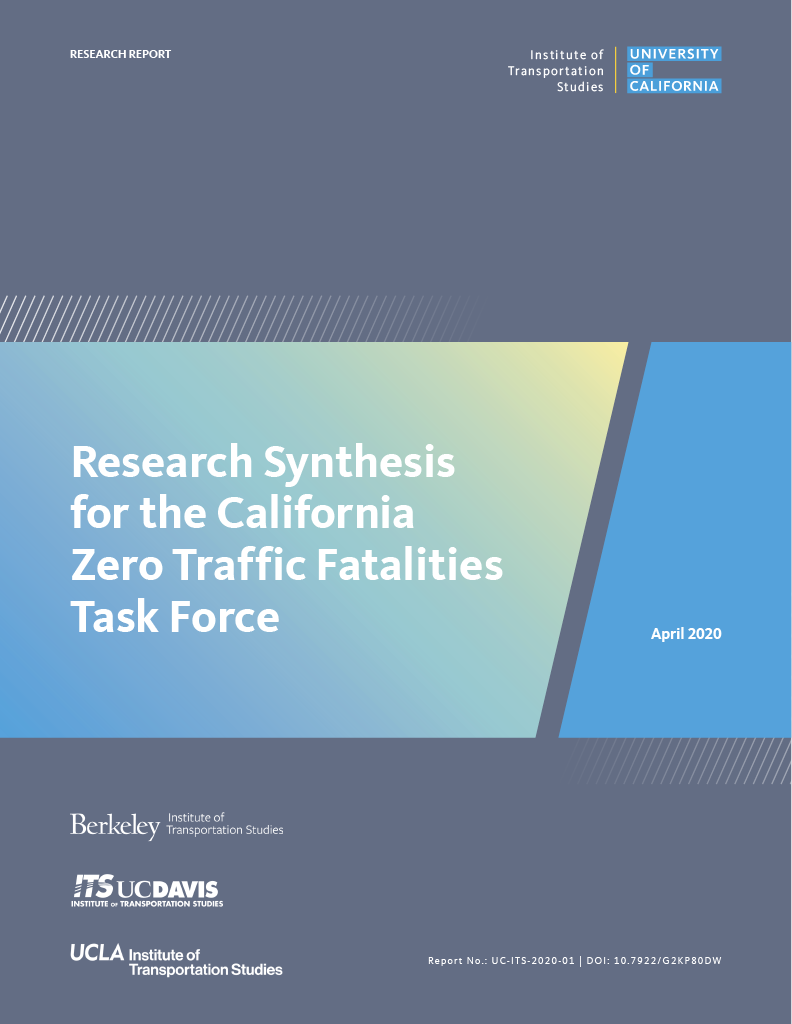Date: April 1, 2020
Author(s): Offer Grembek, Katherine Chen; Brian D. Taylor; Yu Hong Hwang; Dillon Fitch; Sonia Anthoine; Bingchu Chen; Salvador Grover
Abstract
This research synthesis consists of a set of white papers that jointly provide a review of research on the current practice for setting speed limits and future opportunities to improve roadway safety. This synthesis was developed to inform the work of the Zero Traffic Fatalities Task Force, which was formed in 2019 by the California State Transportation Agency in response to California Assembly Bill 2363 (Friedman). The statutory goal of the Task Force is to develop a structured, coordinated process for early engagement of all parties to develop policies to reduce traffic fatalities to zero. This report addresses the following critical issues related to the work of the Task Force: (i) the relationship between traffic speed and safety; (ii) lack of empirical justification for continuing to use the 85th percentile rule; (iii) why we need to reconsider current speed limit setting practices; (iv) promising alternatives to current methods of setting speed limits; and (v) improving road designs to increase road user safety.
About the Project
Over 3,500 people have died on California’s streets and highways each year since 2016, despite commitments at the state, regional, and local levels to reduce this toll. A growing number of safety experts have pointed to high speed limits as a serious obstacle to increased traffic safety. The basic rule for setting motor vehicle speed limits in California, and across the U.S. is the “85th Percentile Rule.” This rule is deeply ingrained, both practically and legally in transportation engineering practice, but is now being scrutinized by those committed to improving traffic safety. This research synthesis will review the history and evolution of the 85th percentile rule in traffic engineering practice, and critically analyze and summarize research to date on its effects.


